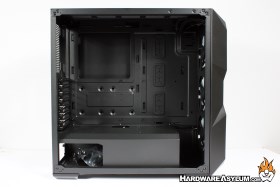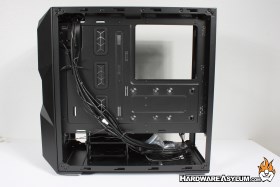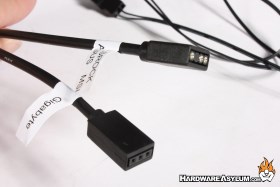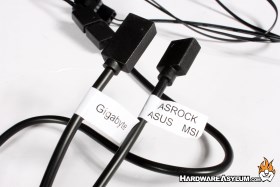Cooler Master TD500 Mesh Case Review
Author: Dennis GarciaCase Interior and Storage
The tempered glass side panel is held in with a metal clip at the bottom of the glass that allows the glass to tilt away from the case but not completely fall allowing you time to remove or install the two large screws at the top which secure the panel.
I find this to be a nice feature in that you are able to quickly install the glass while having a few safety measures that will prevent the glass from getting away from you.
Removing the back panel is typical, remove two screws and pull it away. The panel locks to the front of the case and easily slides in and out. Inside you will find a very open chassis design, no surface components and a solid metal basement panel to cover the PSU, excess cables and hard drive tray.
The back side of the motherboard tray is also very open showing three large rubber grommets for cable access and a large opening for heatsink access. You will find a good number of cable tie points to ensure that your cables are kept neat and out of the way. There is only about 3/4 of an inch of space behind the motherboard tray to run cables so these extra tie points will come in handy to make sure everything is flat and out of the way.
Of course if you are using the ribbon cable designs that Cooler Master includes with their PSUs things will be much easier.
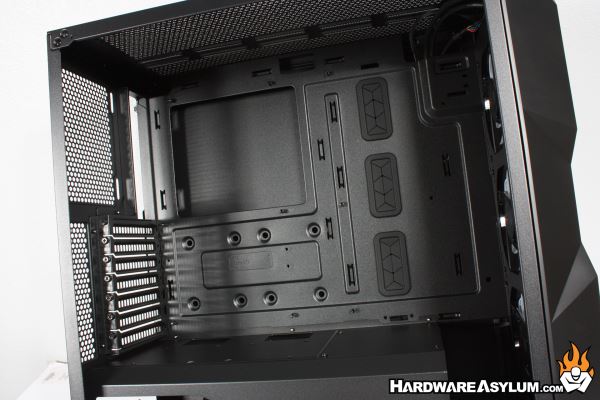
The interior of the TD500 Mesh is very traditional. You will notice eight holes under the heatsink opening. Ideally these are where you could mount SSD drives but would have to remove the motherboard to replace them. The actual SSD installation points are on to top of the basement panel with two small access holes at the back for cable access.
Located at the upper right of the motherboard tray you’ll find a small emboss with a ledge. Back when cases came with external 5.25 drive bays these little details indicated where a drive could be installed. Based on what I am seeing here the motherboard tray design was salvaged from an older case and instead of creating new tooling they adapted the old pressing. This saves money and uses a proven design as a base.
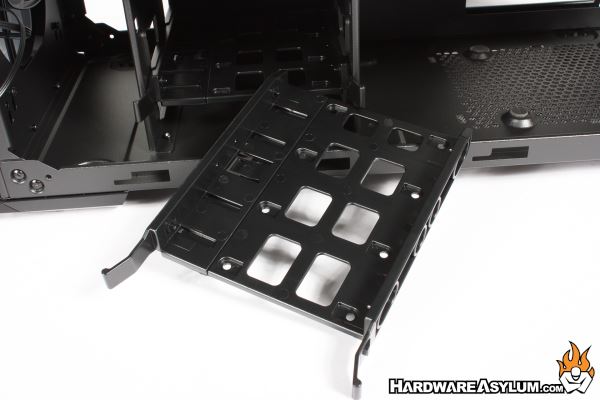
Under the basement panel you’ll find two combo 3.5/2.5 drive trays in a cage that is built into the basement panel. One side can be removed to give you more cable access while the rest is riveted in place. The cage itself is set far enough back that installing any fan and radiator combo will clear without issue. While the edge does feature some cutouts for the drive cage you will be hard pressed to notice them in a completed build.
As you can imagine the Cooler Master TD500 Mesh is fully supports ARGB and even comes with ARGB cables for all of the major motherboards including Gigabyte, ASRock, Asus and MSI. Gigabyte is the only vendor to offer an alternative plug and gets a dedicated cable as a result. For 90% of builds out there the standard 3 pin is all you need.

